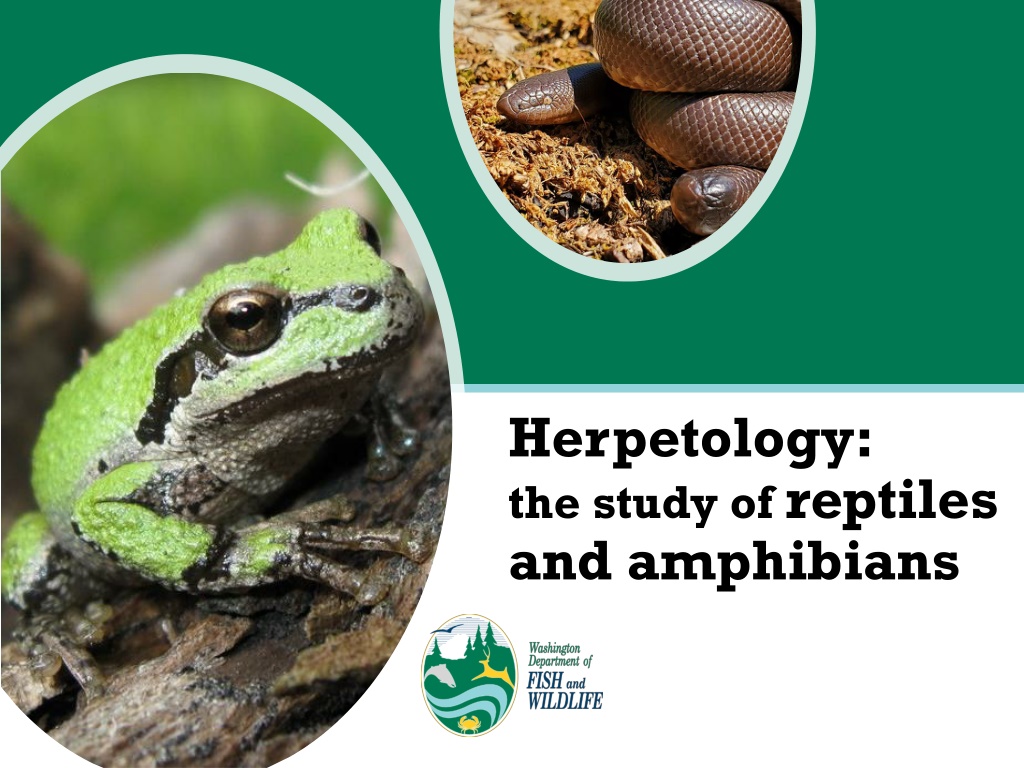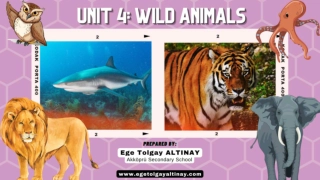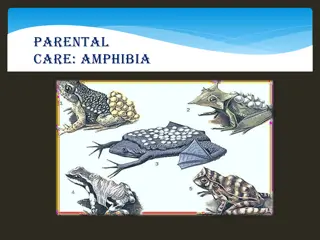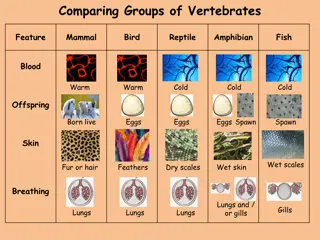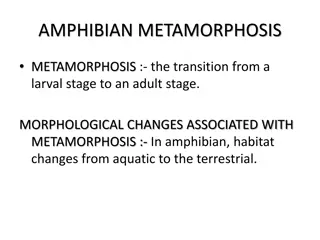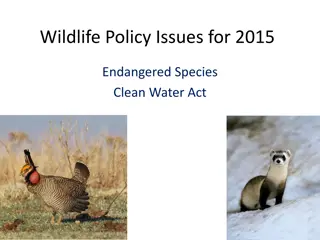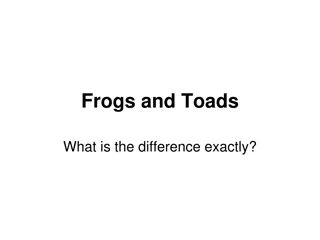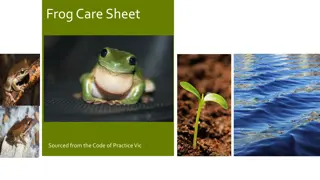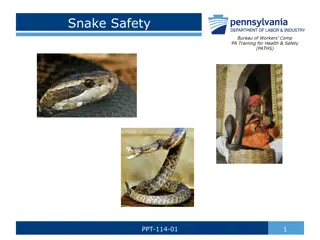Exploring Herpetology: Reptiles, Amphibians, and Their Fascinating World
Delve into the captivating realm of herpetology, the study of reptiles and amphibians. Discover the characteristics of these cold-blooded vertebrates, from scaly reptiles to slimy amphibians. Uncover the similarities and differences between these two groups, their reliance on water, and the rich diversity of herps in Washington state.
Download Presentation

Please find below an Image/Link to download the presentation.
The content on the website is provided AS IS for your information and personal use only. It may not be sold, licensed, or shared on other websites without obtaining consent from the author. Download presentation by click this link. If you encounter any issues during the download, it is possible that the publisher has removed the file from their server.
E N D
Presentation Transcript
Herpetology: the study of reptiles and amphibians
Whats a herp? Herpetofauna (or herp for short) are reptiles and amphibians. Rubber boa Tree frog amphibian reptile
Reptiles Vertebrates=have backbones. Bodies are completely covered with scales. They are cold-blooded. Most produce leathery shelled eggs on land. All species of reptiles have at least one lung. Let s learn more! Department of Fish and Wildlife
Snakes Reptiles Turtles Lizards Department of Fish and Wildlife
Amphibians Vertebrates=have backbones. Skin is smooth and slimy. Most breathe through their thin, delicate skin. Cold-blooded. Eggs are laid in water; juveniles live in water before becoming adults. Need water for their lifecycle. Let s learn more! Department of Fish and Wildlife
Amphibians Frogs Newts Toads Salamanders Department of Fish and Wildlife
WHY DO SCIENTISTS GROUP REPTILES AND AMPHIBIANS TOGETHER? Because they are both cold-blooded. This means that their body temperature changes with their surroundings. Another word for cold-blooded is ectothermic. Let s learn more!
SIMILARITIES AND DIFFERENCES Reptiles Amphibians Both Skin is smooth and slimy. Most breathe through their thin, delicate skin. Eggs are laid in water; juveniles live in water before becoming adults. Need water for their lifecycle. They are cold- blooded. Vertebrates =have backbones. Bodies are completely covered with scales. Most produce leathery shelled eggs on land. All species of reptiles have at least one lung.
HERPS IN WASHINGTON Washington is rich in herps. Our state has 23 species of amphibians and 24 species of reptiles!
Camouflage Camouflage is protective coloring or another physical feature that conceals an animal and enables it to blend into its surroundings. Department of Fish and Wildlife
Camouflage Why do you think it's important reptiles and amphibians have camouflage? Department of Fish and Wildlife
Camouflage Because reptiles and amphibians can be both predators and prey, camouflage helps them blend in with their environment. Department of Fish and Wildlife
Can you spot the herp in this picture? Department of Fish and Wildlife
Why herps? Herps aren t just cool looking, they play an important role in our environments. Department of Fish and Wildlife
Why herps? They also provide us with ecosystem services. Department of Fish and Wildlife
Pest control For example, snakes eat many different types of animals, including rodents which can be considered pests to some people. Without snakes to eat the rodents, rodent populations may increase. Department of Fish and Wildlife
Pest control Frogs and toads eat many insects (including mosquitos!) which helps farmers use less pesticides on their crops. Department of Fish and Wildlife
Role in food webs As both predator and prey, reptiles play a very important role in food webs. Department of Fish and Wildlife
Amphibians What is special about amphibian skin? Amphibians breathe through their skin! Because their skin is so thin and delicate, they absorb any chemicals that may be in the water. Department of Fish and Wildlife
Amphibians This means that any chemicals, pesticides, fertilizers, and pollution that goes into water may be absorbed by amphibians. Department of Fish and Wildlife
Amphibians Because amphibians are so sensitive to changes in water quality, they are seen as indicators of the health of their ecosystems. Department of Fish and Wildlife
What can we do? Because reptiles and amphibians are so important to our ecosystems, we can help take care of them by: Dispose of chemicals properly, Try to avoid herbicides and pesticides, Put down natural and artificial cover (dead wood or plywood boards) in your backyard- this provides a moist shelter for herps, Leave aquatic vegetation growing in wet areas. This can provide food, refuge and habitat for amphibians, and Protect herps from your pets! Don t let your dogs or cats harass or disturb herps. Department of Fish and Wildlife
